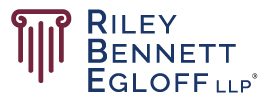CARES Act – BUSINESS LOANS AVAILABLE – Covid-19
This is the third in a series of articles coordinated by RBE’s attorneys to assist our business clients in this unusual time. As you probably know, Congress passed, and President Trump signed into law on March 27, 2020, the Coronavirus Aid, Relief, and Economic Security Act (“CARES Act” or “Act”). Despite just being passed, the CARES Act has been in the public eye for the past couple of weeks and has been referred to as “Phase III” in the relief packages. The Act is approximately 880 pages in length and has broad-sweeping provisions that provide massive amounts of support for individuals and for businesses large and small; it also provides targeted relief and benefits for the largest businesses, public sector, government and certain specified industries. The CARES Act also provides the $1,200 per taxpayer and $500 per child payments you have heard about for eligible taxpayers.
We believe the new CARES Act business loan program will be of significant interest to a majority of our business clients, especially with the provision included which allows for a portion of it to be forgiven. It is designed and intended to provide loans to businesses so the proceeds can be used to rehire employees (if the business has already laid off employees) and to keep and pay employees. This article will focus on that new business loan program.
CARES Act Loan Program
The first section (approximately 80 pages) of the CARES Act is “Title I– Keeping American Workers Paid and Employed Act.” This article will focus mainly on the portion of Title 1 that provides businesses large and small access to loans; a portion of which loans will be eligible for forgiveness. This new loan is referred to as the “Paycheck Protection Program” but it is broader in effect than that name would suggest and will be referred to in this article as the “CARES Act” loan program. $349 Billion is set aside under the CARES Act for this loan program which also falls under the Small Business Administration (“SBA”). It is not, however, to be confused with the separate SBA Disaster Relief Loan Program (for Economic Injury) that we reported in our first edition of this series at rbelaw.com/newsroom/financial-assistance-resources-for-businesses-affected-by-covid-19. Businesses can apply for both of these types of loans, as they have different purposes and requirements.
Businesses Eligible for the CARES Act Loans
Qualified businesses which can apply for a CARES Act loan include: those with less than 500 employees, not-for-profit organizations, veterans’ organizations, described Tribal business concerns, and some businesses with more than 500 employees (so long as no physical location has more than 500 employees and it has an NAICS Code beginning with the number 72). They also include self-employed individuals, sole proprietors, and independent contractors (all of whom will be required to supply verifying documentation, such as payroll information, 1099-MISC forms, and income and expenses to determine eligibility). Essentially, the inclusion of eligible businesses is by design very broad.
Administration of the CARES Act Loans
Although administered through the SBA, the CARES Act loan program, applications, and documentation will be processed through the SBA’s approved network of banks. To streamline the loan process, certain traditional requirements in SBA lending have been altered: collateral may not be required, and personal guarantees are waived (however the Act provides for personal liability of owners for misuse of loan funds).
Generally, to apply for a loan, business owners should contact their bank to see if the bank is eligible to handle the CARES Act loans (if not, we or your bank can provide a referral to an SBA approved lender). It may also take a short time for the SBA to issue appropriate guidance and loan documentation to lenders, but you should call your bank and get your business and documentation ready (2019 financials and current 2020 should be in order) to apply. The covered period under the Act (apparently for obtaining and administering the loan) is defined as February 15, 2020 through June 30, 2020.
CARES Act Loan Amounts
There are a few formulas in the CARES Act that will be used to determine the amount of the loan available to a business. Generally, the amount calculated is based on an average of payroll costs during a defined period, to which a multiplier is applied. It appears the calculation will be made by the SBA or bank during the application process, but a business can estimate the amount in advance using the appropriate formula.
The loan amount cannot exceed $10.0 Million. Interest is 4% per annum with loan terms up to 10 years, and no pre-payment penalty. There are payment deferral programs (for the loan obtained) available as well.
Uses of CARES Act Loan Proceeds
Generally, a CARES Act loan obtained by a business can be used to pay a wide range of expenses the business pays during the covered period. Included in available uses are payment of: payroll costs; salaries, wages, commissions; cash tips or equivalent; vacation, family, medical, parental or sick leaves; allowances for separation; payment of group health/insurance benefits; payment of retirement benefits and State or local taxes assessed on compensation of employees. Proceeds can also be used for payments of interest on mortgage obligations and interest on certain other debt obligations (so long as the debt was in place before the covered period), rent, and utilities. Compensation of sole proprietors and independent contractors can also be paid. The proceeds cannot be used to pay certain expenses including: the portion of compensation that is in excess of $100,000.00 per year (prorated for the applicable period) for any one individual/employee; compensation for employees whose principal residence is outside the United States; or, the portions of sick or family leave that qualify for a tax credit, including those we addressed in the earlier articles in this series at rbelaw.com/newsroom/covid-19-business-resource-developments-second-in-a-series.
Guidelines for Forgiveness of Portion of CARES Act Loans
A key component of a CARES Act loan is the forgiveness provision that applies to a portion of a loan. Forgiveness appears to be based on the amount of the loan proceeds spent by the business, during the 8-week period that begins on the date of the origination of the loan, on certain expenses defined in the CARES Act, including: payroll costs; payment of interest on a covered mortgage obligation (does not include principal payments); payment of covered rent; and, any covered utility payment. It appears that the lender or SBA will calculate the “expected forgiveness amount” in advance. This provision also promotes the desired effect of inducing employers to keep or rehire employees during that entire 8-week period and after to maximize the amount eligible for forgiveness.
There are some limitations to the forgiven amount. The amount cannot exceed the principal amount of the loan and it will be reduced if there is a reduction in number of employees by the business during the covered period. Notably, there are requirements for submitting documentation (described in the Act) after the loan is obtained and after the 8-week period. The lender will then verify the business meets the requirement for forgiveness of any part of the loan and determine the actual amount. Although forgiveness of debt is typically taxable as income, any amount forgiven is specifically excluded under the CARES Act from the gross income of the business. The SBA will, within 30 days, issue guidance and regulations to implement this section of the Act. We plan to report on any further guidance issued by the SBA as it is given.
Conclusion
The CARES Act is clearly driven at supporting small to larger businesses to attempt to limit the economic effects of the coronavirus on the business and its employees. Businesses should consult their accountant with any questions about any tax effects of the Act. If businesses require further assistance or guidance with the CARES Act loan program (Paycheck Protection Program), with respect to the SBA Distress Relief Loan program, or any other business or financial guidance brought about by this COVID-19 pandemic, please contact your trusted advisors at Riley Bennett Egloff LLP.

Author Ryan L. Leitch
Ryan Leitch represents businesses and business owners including in construction, manufacturing, retail, distributors, software and technology, sales and other service industries in a variety of matters, including entity selection and organization, shareholder disputes, mergers and acquisitions, loan transactions, and general contractual matters. Ryan has substantial experience in representing lenders in large, complex creditors’ rights cases. Ryan also represents individuals in estate and succession planning, business succession planning including Wills, Trusts, Power of Attorney and health care designations and other legal matters.
© Riley Bennett Egloff LLP
Disclaimer: Article is made available for educational purposes only and is not intended as legal advice. If you have questions about any matters in this article, please contact the author directly.
Permissions: You are permitted to reproduce this material itn any format, provided that you do not alter the content in any way and do not charge a fee beyond the cost of reproduction. Please include the following statement on any distributed copy: “By Ryan L. Leitch© Riley Bennett Egloff LLP – Indianapolis, Indiana. www.rbelaw.com”
Posted on Mar, 29 2020 by Ryan L. Leitch
